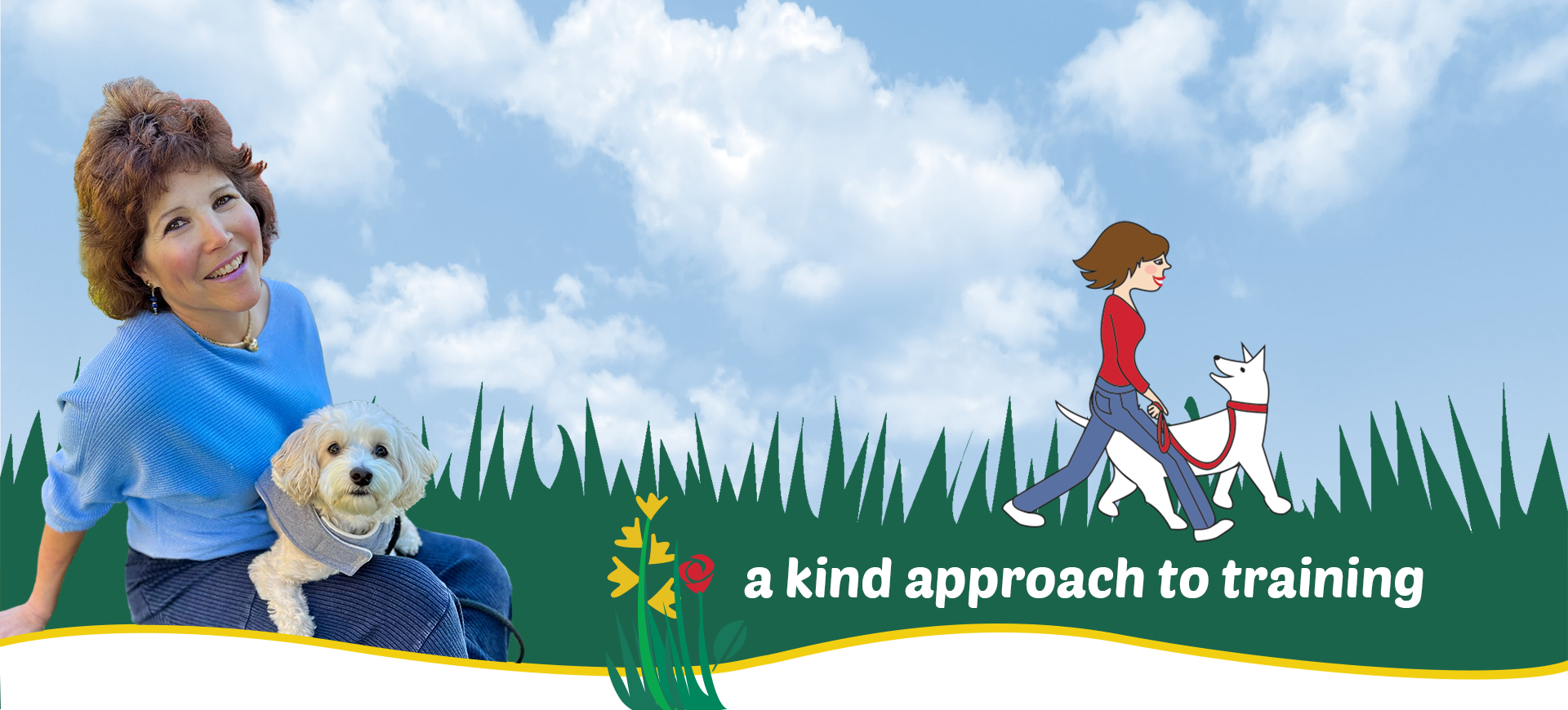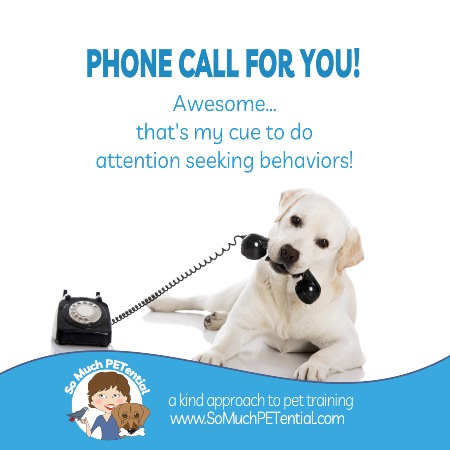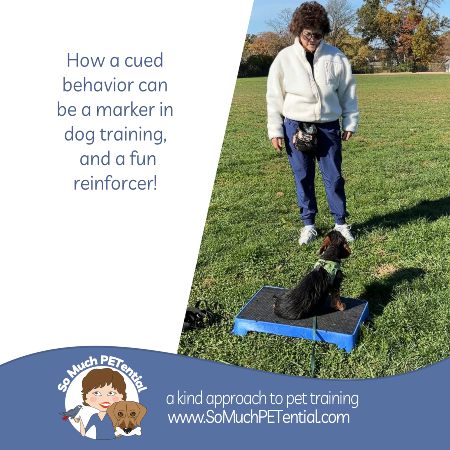I was watching a client show me how she asked her dog to lay down the other day. She first got food in her hand, then bent over from the waist, moving her food hand all the way to the ground while saying ‘down’ to her dog. Little did she realize that each one of those behaviors was serving as a cue to her dog, and multiple cues can compete in training, that can affect your training success.
Yes, her dog laid down; however, what exactly was her cue to her dog to do that? There was a lot going on. Four behaviors to be exact.
- She got food in her hand.
- She bent from the waist
- She moved her food hand to the floor
- She said the word DOWN
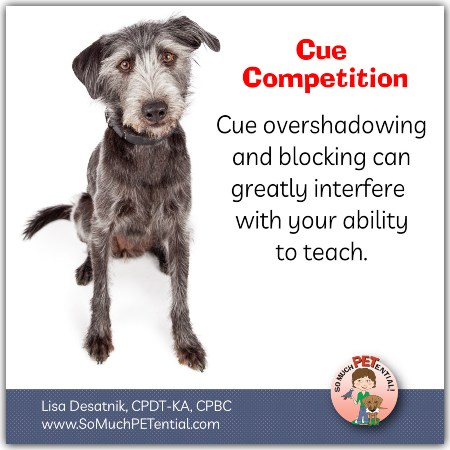 It was of no surprise that when I asked her to stand straight, keeping her hands (without food) to her side, that her dog looked at her with a blank stare…before moving away.
It was of no surprise that when I asked her to stand straight, keeping her hands (without food) to her side, that her dog looked at her with a blank stare…before moving away.
From her dog’s perspective, that word was probably the least salient of any of those behaviors my client did to indicate that she wanted her dog to lay down. In fact, when she did the body gestures without the word, her dog did lay down.
Cue Competition: Overshadowing and Blocking
According to the Psychology Dictionary, with regard to Pavlovian conditioning, overshadowing is a lessening in conditioning with one conditioned stimulus because of the existence of another conditioned stimulus. Generally a more powerful stimulus will overshadow a less-than-strong stimulus.
In other words, when there are multiple stimulus presented at the same time, followed by an outcome, learning the relationship between the less noticeable/important (cues) and the behavior and its consequence is weakened. The more noticeable/important cue (s) is thus overshadowing the less noticeable cue. Overshadowing can greatly interfere with your effectiveness to teach your pet, and with your pet’s ability to learn the cue/behavior that you are trying to teach.
In the scenario above, my client’s dog had clearly not learned her intended verbal cue (DOWN) since her dog did not respond by laying down.
Blocking can occur when you present a new cue at the same time as you present a previously learned cue to your pet. (By learning, I mean that your pet has already learned WHEN that CUE is presented, that IF he does a certain behavior, THEN a certain consequence will follow). The second, new cue is irrelevant to the learner. It is blocked.
An example of this is when you have taught your dog to spin with a hand movement (when you make a little round movement with your fist that means you – the dog – twirl and then you get a treat), and then you begin saying ‘spin’ simultaneously while you move your fist. The word ‘spin’ is tuned out. If you would like to teach your dog to turn with either the word spin OR your fist movement, then, JUST BEFORE you move your fist, say ‘spin’. This way the word comes to predict the fist movement which is associated with the behavior/consequence outcome. Then you can fade out using the fist movement and test the word by itself.
To prevent cue overshadowing and blocking, consider these three tips:
You can definitely teach your pet different cues for the same behavior; however, just teach one cue at a time. Think about what cue you would like to teach first and focus on that. When you are ready to add a second cue, you can teach that by giving the new cue followed by the old cue then the behavior and consequence.
Be watchful and aware of your body language. Videotaping yourself can be helpful. Practice avoiding any extra movements that could be interpreted by your pet as a cue for the behavior.
Keep your food out of your treat pouch until after your pet has done the wanted behavior. You can have food in your hand but have that food hand out of sight.


